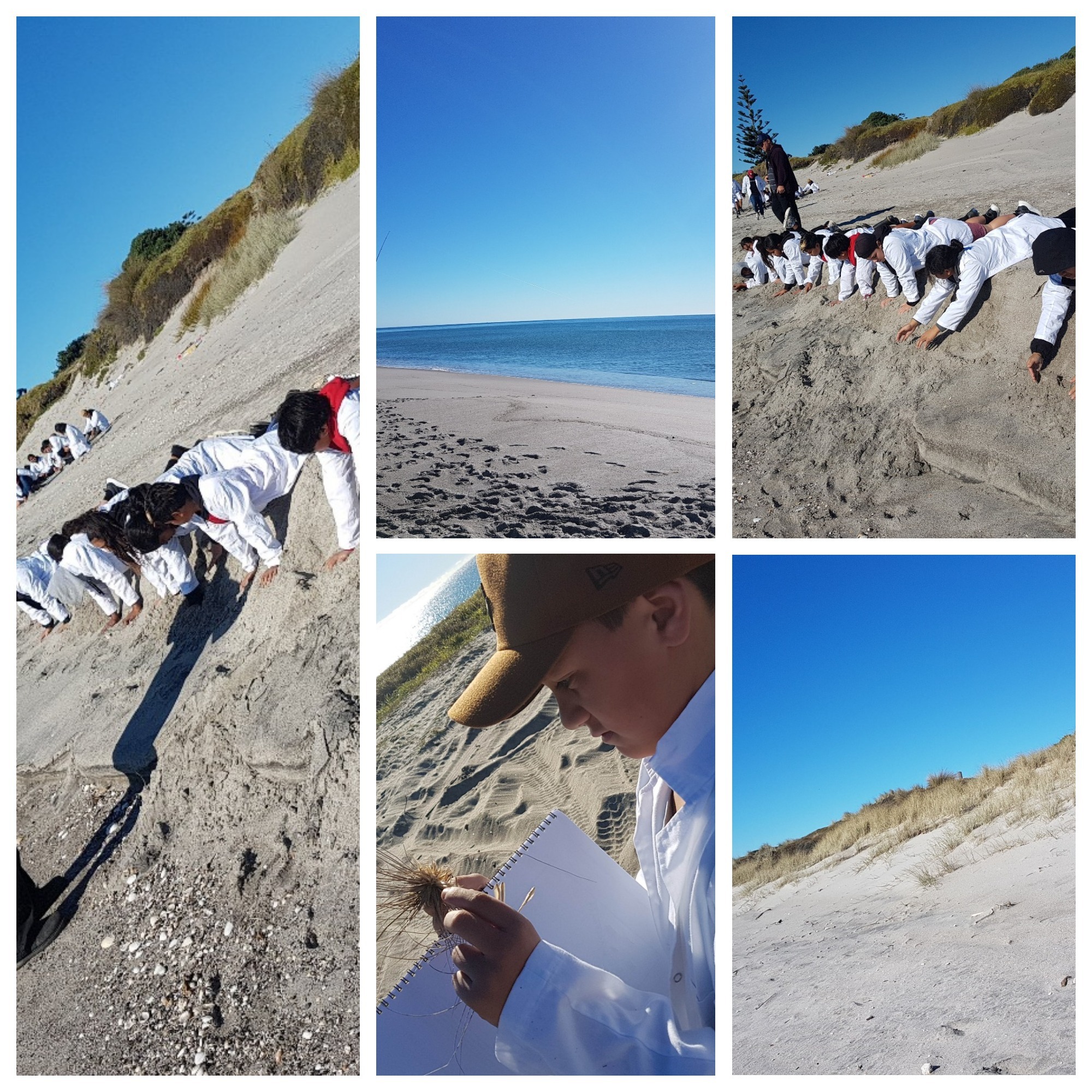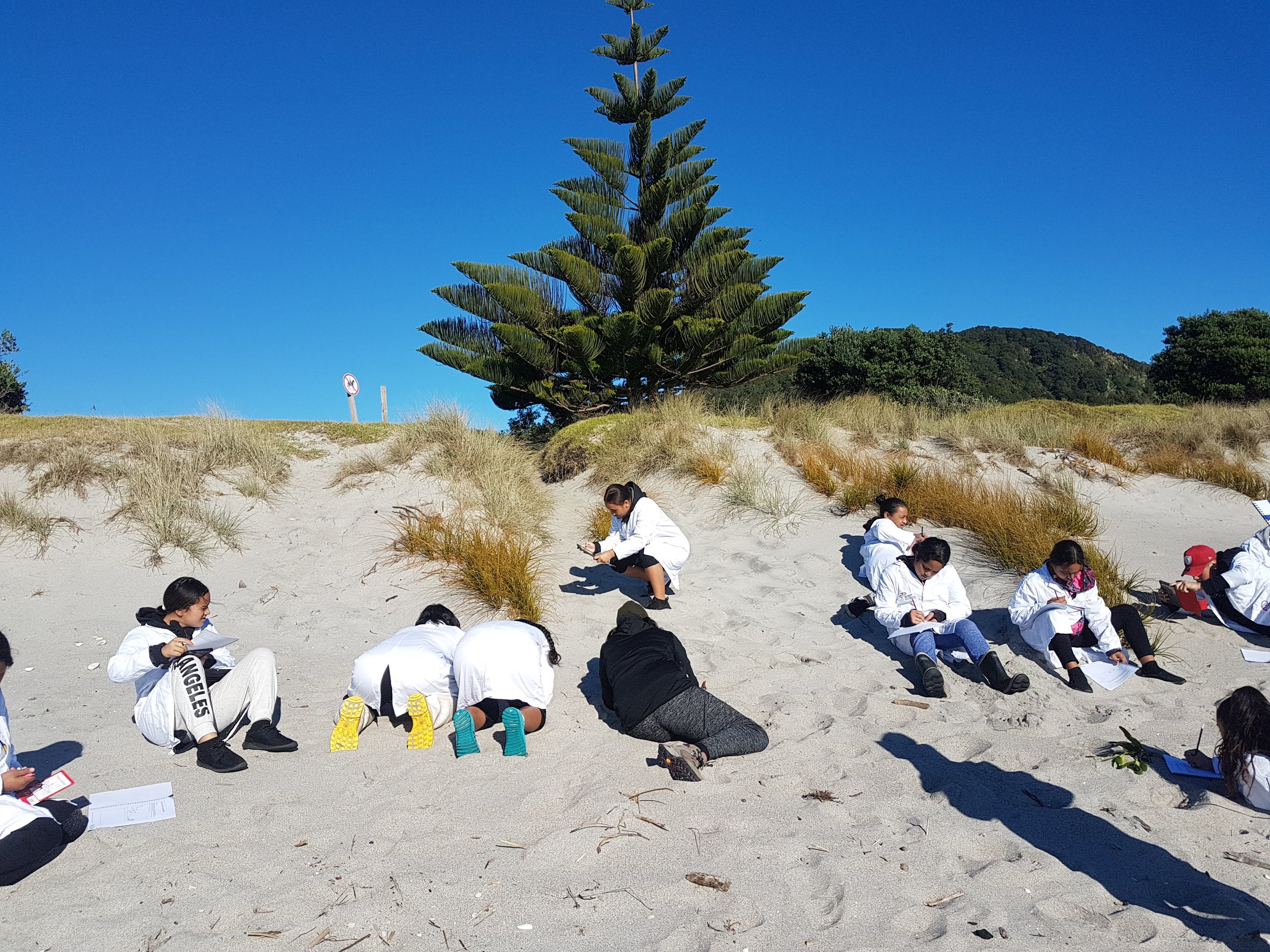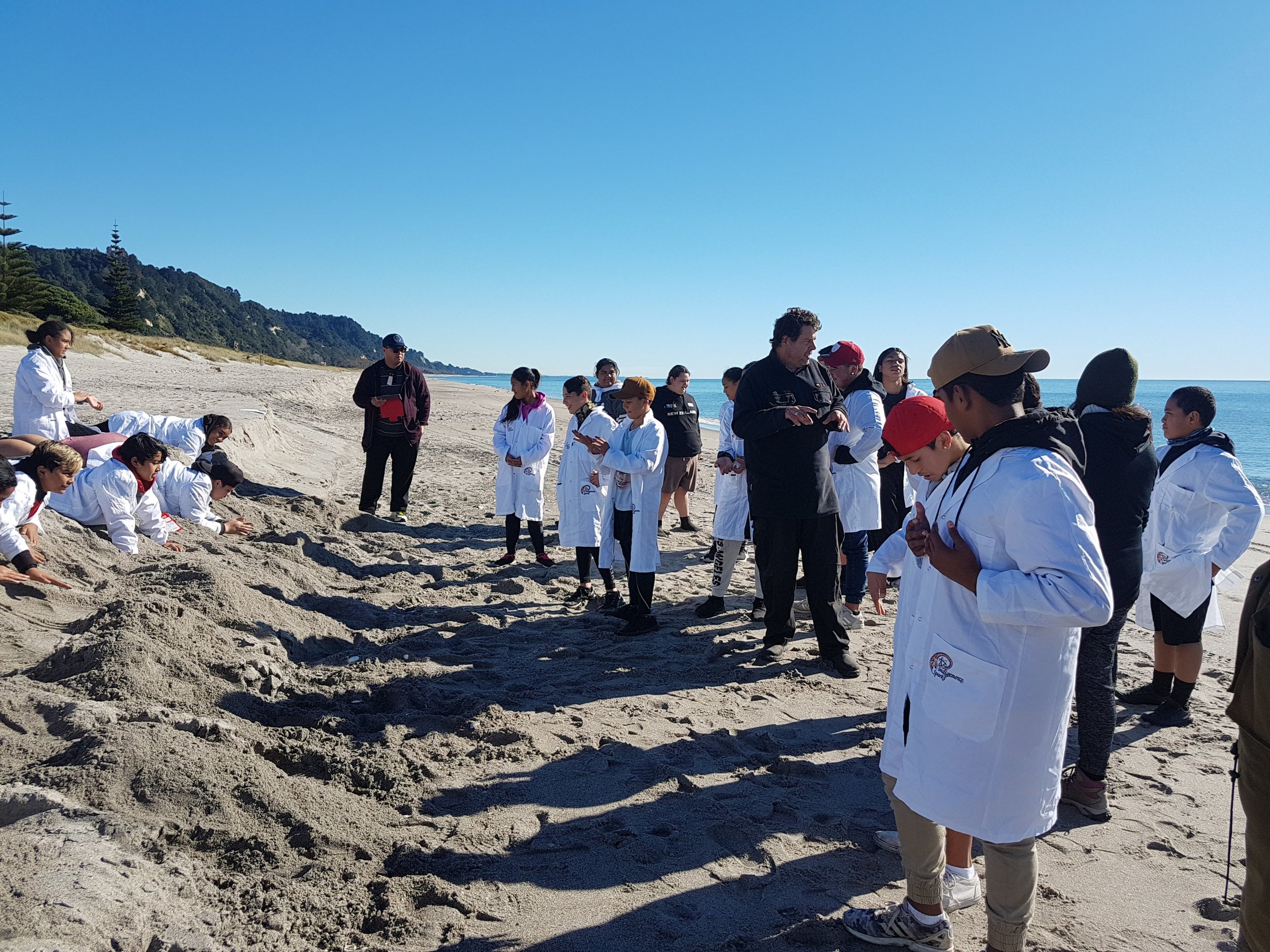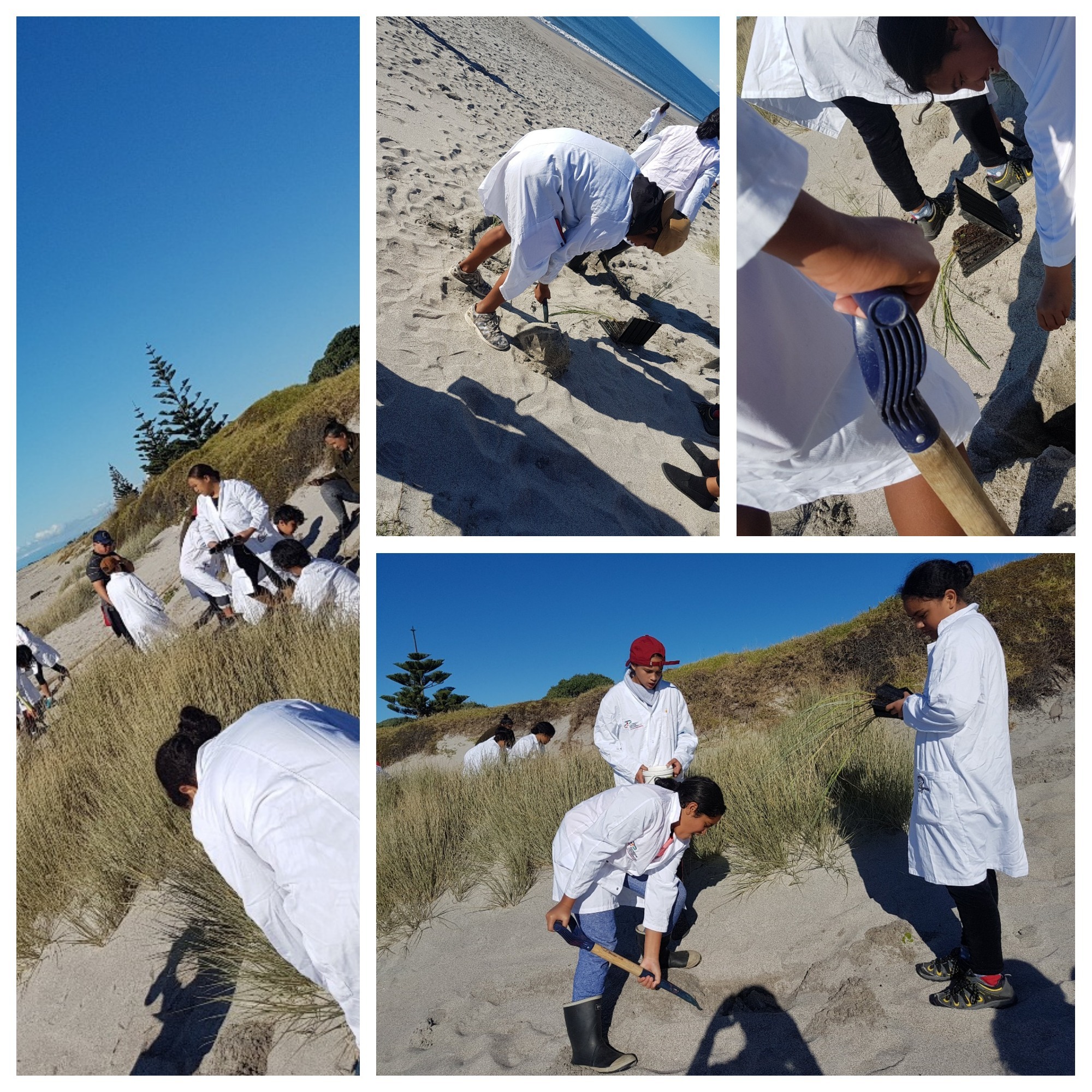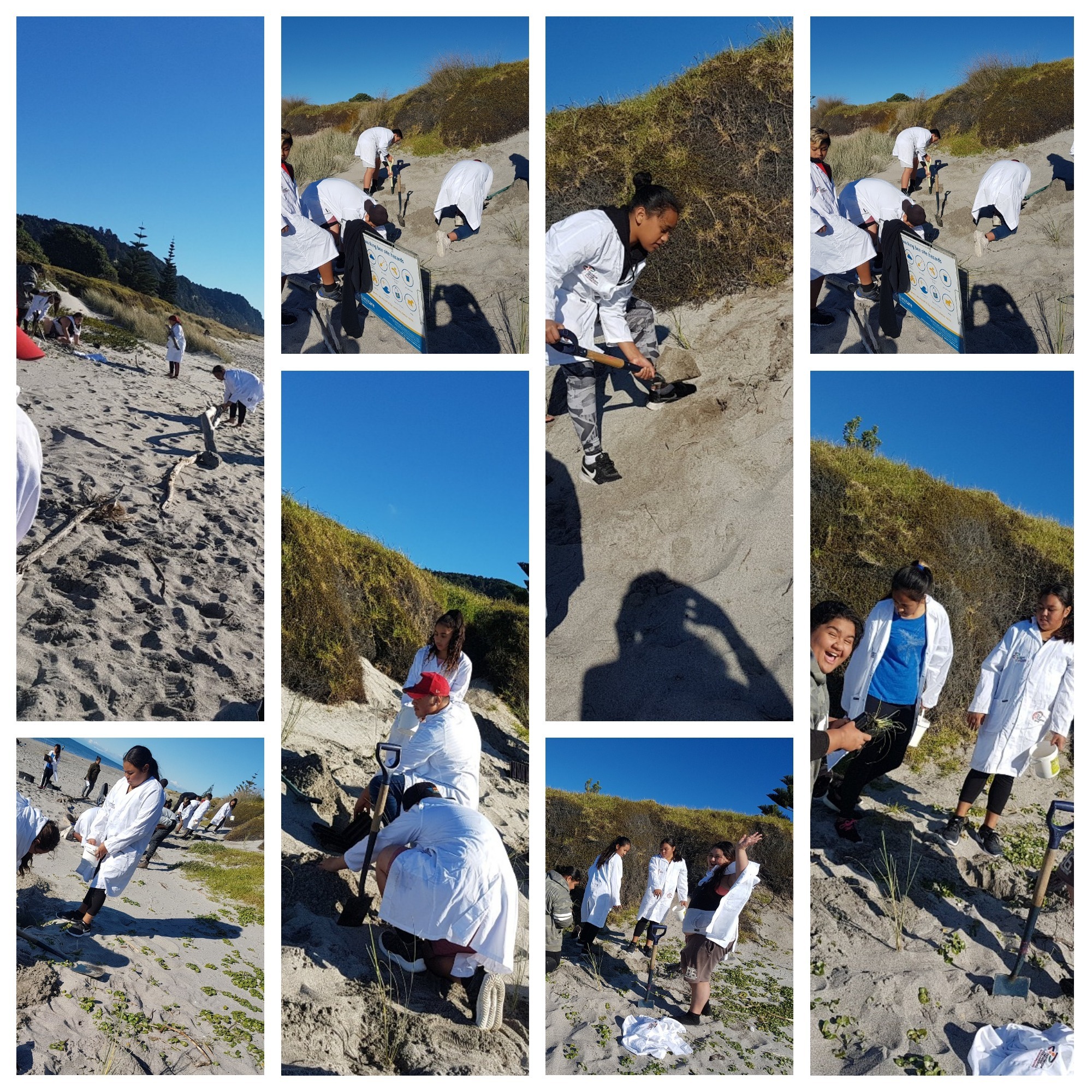Protecting our sand dunes at Matata
Kawerau rangatahi were able to work closely with Bay of Plenty's Regional Council coastal scientist Wayne O'Keefe to understand the significance of our sand dunes at Matata. Matata means "dividing waters" and is located in the coastal Bay of Plenty, 24km west of Whakatane, or 70km from Tauranga. Before the Rangitaiki Plains were drained the Rangitaiki River ran into the Tarawera River, and originally the area was known as Te Awa o Te Atua, or the River of the Gods.
Sand dunes serve a critical role as reservoirs of sand for storms; habitat for plants, animals and insects and protection of area immediately behind the dunes.
Dunes at Matata
*Reduces wind erosion by decreasing wind speed at ground level.
*The building up sand dunes, reducing the amount of damage during a storm.
*Reduces wave erosion.
*Tolerate a hostile environment of high winds, salt spray, sand blast, covering by sand, sandy soil and little water.
*Serving as habitat to a wide variety of creatures
Wayne shared his extensive experience from Life's a Beach Education Resource as he empowered rangatahi to become future keepers of our sand dunes. Foredunes plants like kōwhangatara (Spinifex sericeus) and pīngao (Ficinia spiralis), trap wind-blown sand.
Foredunes
This sand serves as a reservoir for the beach during periods of wave erosion. In the absence of sand trapping dune vegetation, wind-blown sand from the beach moves inland and is lost to the beach/dune system. Sand remains mobile and loose in the system, so can be moved along the beach in long shore drift currents. Kōwhangatara (spinifex) and pīngao have the ability to grow through accumulations of wind-blown sand.
Mid and Back Dunes
The area behind the foredune is sometimes called the mid or back dune. Plants here gradually replace the foredune plants as soil conditions improve and conditions become less harsh (e.g. decreased exposure to salt spray and sand blast). For example Wīwī, (knobby clubrush) Ficinia nodosa [1m] -a tough plant with strong dark green stems and dark brown clusters of seeds near the tips of the stems. Wīwī is found in lots of places, from on top of the sand dunes to wet dips and hollows. It can handle salt spray and sand blasting.
Pōhuehue, (wire vine) Muehlenbeckia complexa and Puka, M. australis [variable, from 0.3 to 1m] - a creeping vine which is very tough and can climb up other plants and fences. It also grows along the ground.
Students then learnt about the dynamic process of sand dune formation that begins with the quiet stage, an erosion stage and an accretion stage. They had fun demonstrating the natural storm cut and beach recovery processes/the cut and fill cycle and appreciated the ways in which post-storm recovery is aided by sand binding plants colonising the dune scarp, trapping wind-blown sand to repair the dune.
Youth felt empowered to do their part in planting dune plants to prevent direct wave erosion. However, due to the fact that that sand naturally moves onshore and offshore in a cycle; dune sand may not be bound sufficiently by plant roots and therefore cannot resist all wave attack.
Youths completed this enriched experience by planting hundreds of spinifex and pīngao along the front dune and expressing a commitment to continue the process each year. They have begun to leave a legacy for tamariki.




